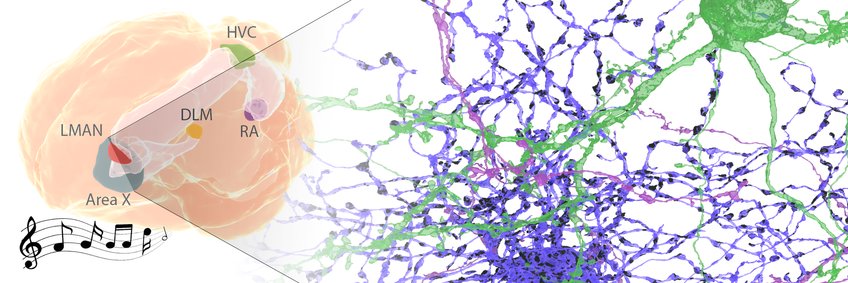
Circuits of Birdsong
How do animals store learned behaviors in their neuronal networks and retrieve them when performing those behaviors? It is widely believed that the connections between neurons, or synapses, are the memory substrate of learned behaviors. Under this assumption, learning requires that these synapses be formed, eliminated, or tuned such that the brain can later make use of the stored connectivity pattern. The sum total of all these synaptic connections is called the connectome.
But despite the widespread belief that an animal's learned behaviors are stored in the synaptic connections of its brain, we still lack a clear understanding of how exactly the behavior is encoded in a connectivity pattern, even for the simplest behaviors.
Using the zebra finch songbird as a model, we investigate how song memories are stored and retrieved from the underlying brain circuits. These birds can perform songs as an adult that they have practiced as a juvenile, not unlike how humans learn language.
To map these brain circuits at sufficient resolution to see putative memory-forming synapses, we employ high-throughput 3D electron microscopy. This technique allows us to generate a very detailed 3D image of a brain area, similar to a CT scan in a hospital, but with a resolution that is about a million times higher. Vast amounts of image data result from this process, far more data than someone could ever look through manually. Thus to analyze the data, we employ state-of-the-art deep learning techniques to infer the connectomic map, and let the artificial neural networks reconstruct the real ones.
Our long term goal is to mechanistically understand how a learned behavior, the zebra finch song, is encoded in underlying synaptic wiring patterns. Using this understanding, we can then create a link between the specific behavior of an individual and the connectome it is based on.

